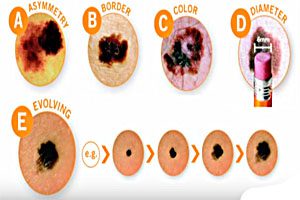
Newly published research suggests men who take the erectile dysfunction drug Viagra (sildenafil) may significantly increase their risk of melanoma, a serious skin cancer. Researchers found that those who took sildenafil, more commonly known as Viagra, were 84 per cent more likely to get melanoma, the most deadly form of the disease, the (UK) Daily […]
 Newly published research suggests men who take the erectile dysfunction drug Viagra (sildenafil) may significantly increase their risk of melanoma, a serious skin cancer.
Newly published research suggests men who take the erectile dysfunction drug Viagra (sildenafil) may significantly increase their risk of melanoma, a serious skin cancer.
Researchers found that those who took sildenafil, more commonly known as Viagra, were 84 per cent more likely to get melanoma, the most deadly form of the disease, the (UK) Daily Mail reports. Researchers think the impotence drug may affect the same genetic mechanism that enables skin cancer to become more invasive.
Because the study is preliminary, it is too early to advise men to stop taking Viagra, said Dr. Abrar Qureshi, professor of dermatology at Brown University. But he advised men taking Viagra who have a high risk of melanoma to speak with their doctors. The risk of more common, less dangerous skin cancers, such as basal cell or squamous cell cancers, was no higher in men who took Viagra, according to the Daily Mail.
The study, published online in the journal JAMA Internal Medicine, analyzed 26,000 men in the U.S and China, using information from the Health Professionals’ Follow-up Study, which collects data about male healthcare workers, including doctors. After excluding participants who reported cancers at baseline, a total of 25,848 men remained in the analysis, according to the article’s abstract. Members of the research team included medical doctors and PhDs from Brown, Harvard, and Indiana University, and from Tianjin Medical University in Tianjin, China.
The average age of men included in the study was 65; six percent had taken sildenafil. The analysis showed that men who took Viagra even once had double the risk of developing melanoma, the Daily Mail reports. Dr. Qureshi said the research team took into account other skin cancer risk factors including the man’s sunlight exposure and family history of the disease.
Viagra’s side effects include headache, flushing, indigestion, stuffy or runny nose, back pain, temporary vision changes, and dizziness or fainting. The Mayo Clinic warns the drug may not be safe for men with heart problems, high or low blood pressure, a history of stroke, eye problems (including retinitis pigmentosa), and liver or kidney disease.


